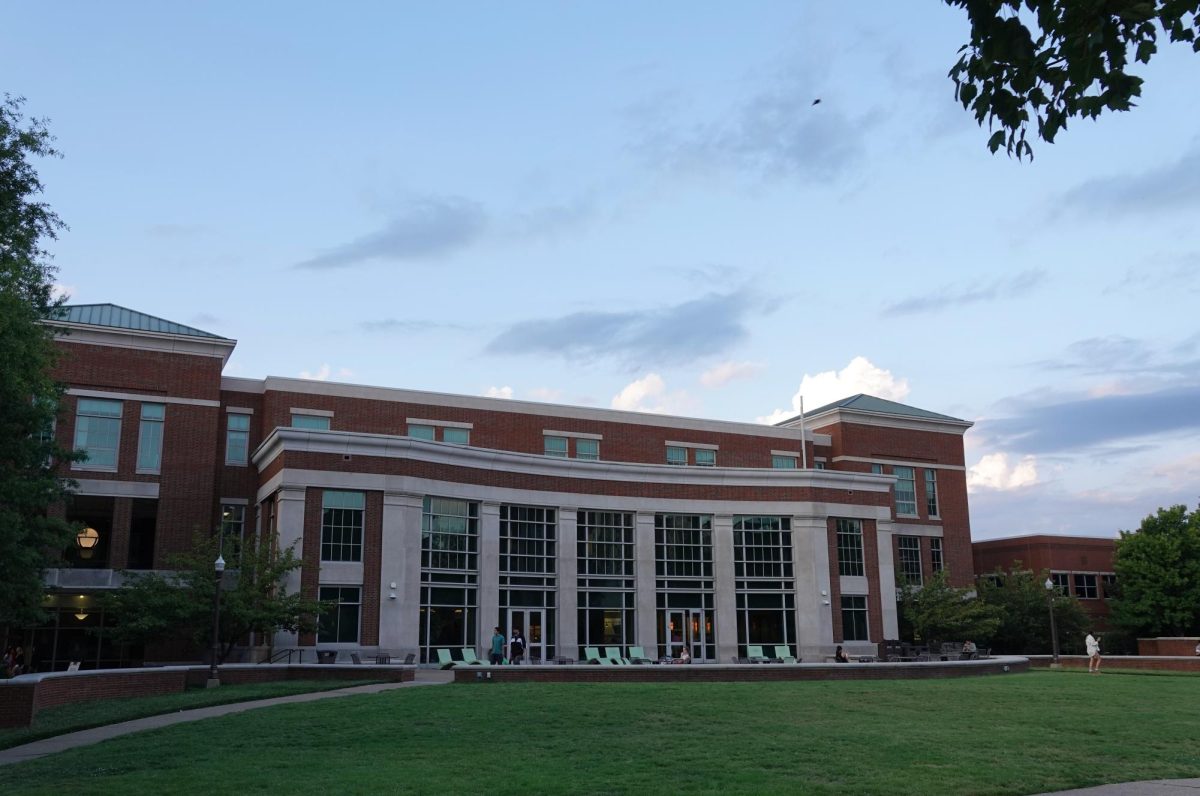“I’m third generation in the writing business. My grandfather was a printer on Coney Island, my dad was a newspaper guy, my mother was a book editor and my three siblings were all basically geniuses,” Maraniss said. “I was the dumb one in my family who followed my dad into newspapers.”
David Maraniss, Pulitzer Prize-winning writer and associate editor of The Washington Post, comes to Vanderbilt once every two years to co-teach courses. This year, he’s co-teaching PSCI 3701: Political Biography and Political Leadership with Alan Wiseman and PSCI 1001: Commons iSeminar – Sports & Society with his son, Andrew Maraniss. David Maraniss is known for his biographies on athletes and political figures, his profiles and the in-depth research behind his writing. At Vanderbilt, he is known for his courses that combine important narratives with American society.
Maraniss began writing at a young age, influenced by the generations of writers who came before him. He attended the University of Wisconsin-Madison and wrote for a few newspapers before starting at the Post in 1977. There, he developed his skill as a long profile writer, which prepared him well for the investigative and analytical work that he would do as an author.
“It was a natural transition for me from that to writing books — first, biographies,” Maraniss said. “My first biography was of Bill Clinton in 1992, and I’ve been writing books ever since.”
Maraniss wrote about Clinton for a year, traveling through Arkansas and winning the Pulitzer Prize in 1993 for National Reporting. He follows an all-encompassing method of tracking down a wide array of information on a subject — physical and metaphysical, written and spoken — to create a complete view of each subject. Maraniss calls this approach “the four legs of the table.”
“The first leg is to go ‘there,’ wherever ‘there’ is to understand the geography, sociology and culture of the people that I’m writing about; the forces that shape them,” Maraniss said. “For each of my books, I’ve been able to do that. I moved to Green Bay to write about Lombardy in the winter and spent tons of time in Arkansas to understand Bill Clinton.”
Second, Maraniss conducts as many interviews as possible, often in the hundreds. He interviews people several times to gain a full understanding of how their narrative fits into a story. The third leg of the table, and the most important to Maraniss, is obtaining primary documents.
“For each of my books, I’ve gone to archives all over the country and the world to get those documents,” Maraniss said. “I’ve often talked about how important letters are. Because even if they’re not totally accurate, they reflect someone’s sensibility at that time as opposed to interviews from someone later.”
The fourth leg and final step to Maraniss’ process is metaphysical.
“It’s to look for what’s not there and break through the conventional thinking and find the real story,” Maraniss said. “So often there’s an encrusted tale that’s told about a famous person that’s not the real story.”
Through this process, Maraniss has written numerous acclaimed biographies of political figures and athletes, leading to him becoming a New York Times Best selling author. For Maraniss, his athlete biographies are meant to be more than recountings of great feats on the field or court. Rather, they are meant to illuminate important aspects of American history.
“They’re stories that have to do with sports but are really about so much more than that,” Maraniss said.
For example, his most recent book “Path Lit by Lightning: The Life of Jim Thorpe,” focuses on the multisport Native American athlete, who has been called the greatest athlete of all time. Despite having a wide range of skills, he faced extreme prejudice and odds as a member of the Sac and Fox Nation. Maraniss traveled around the country to study Thorpe’s full story, which is intertwined with stories of American racism and the Indian boarding schools of the time.
This approach of studying American history through athletes is something Maraniss will bring to his “Sports & Society” course this spring, which will focus on sports’ intersection with race, gender, culture and economics, among other topics. One Nashville-specific example of this intersection is the Tennessee State Tigerbelles — TSU’s track team, who won gold at the 1960 Rome Olympics and set the stage for Title IX and the development of women’s sports nationally.
“They set the world afire with what they did in Rome, led by Wilma Rudolph, and what they endured traveling through the South in the early 1960s, where they couldn’t stop at gas stations, their coach didn’t have an office and they had a pockmarked track field,” Maraniss said. “Everything they had to go through helped all the women who followed.”
Maraniss is eager to share this story and others with students, especially since he will be teaching it with his son Andrew Maraniss, who oversees the Sports & Society Initiative in Vanderbilt Athletics. Andrew Maraniss is also a New York Times Best selling author, known for his book on Perry Wallace, a Vanderbilt alumnus and the first African-American basketball player in the Southeastern Conference.
“I’m really excited about teaching with Andrew who really is much better at a lot of this than I am, in terms of defining his stories and their importance to something larger than just sports,” Maraniss said.
The second course Maraniss will teach, Political Biography and Political Leadership, will cover a different biography each week, allowing students to learn about Samuel Adams, Martin Luther King Jr. and the Obamas, among other important political figures. The course is unique in that the authors of the biographies will be brought in each week (either in-person or on Zoom) to discuss their books and techniques.
“What’s lucky for me is that I get to co-teach with a great professor,” Maraniss said. “So, I get all the wonderful interaction with the students, but I don’t have to do all of the administrative work — it’s the best of both worlds for me.”
Maraniss was initially drawn to teaching at Vanderbilt 10 years ago because his son and family live here. He reached out to Professor John Geer, who was head of the Department of Political Science at the time.
“So we worked it out, and I came in 2013 for the first time and have done it every two years since then,” Maraniss said.
Maraniss has grown to love Vanderbilt, from the campus in springtime to the sports to the live music.
“It’s a beautiful campus, and the Political Science Department is full of really great people and professors, so I enjoy being part of that,” Maraniss said. “I’m a baseball guy, so I love the VandyBoys.”
Aside from the beauty and amenities of campus, Maraniss said he especially appreciates the interaction with students.
“Vanderbilt students are totally engaged and interested. There’s sort of a false impression these days that young people aren’t good writers,” Maraniss said. But I’ve found that almost all of the students I’ve dealt with are good writers and are interested in writing and in learning more about how to write well in a narrative form, and that’s fun for me to work with.”






